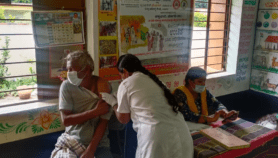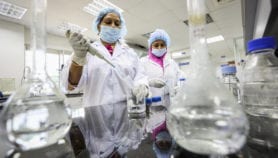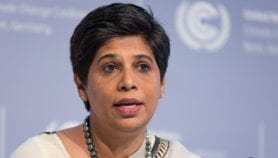By: T.V. Padma
Send to a friend
The details you provide on this page will not be used to send unsolicited email, and will not be sold to a 3rd party. See privacy policy.
[LONDON] Climate change could mean unusually high temperatures occurring much more often in most parts of the world by the end of the century, according to a special report on extreme weather events from the Intergovernmental Panel on Climate Change (IPCC).
"A hottest day that occurs once in 20 years is likely to become a one-in-two year event, except in the high latitudes of the northern hemisphere, where it is likely to be one-in-five years," according to Sonia Seneviratne, a climate expert at ETH Zurich, which is part of the Swiss Federal Institute of Technology.
Seneviratne was speaking at the Planet Under Pressure conference, which is being held in London this week (26–29 March).
She was a member of an IPCC group set up in 2009 to compile the Special report on managing the risks of extreme events and disasters to advance climate change adaptation (SREX), which was published today (28 March).
This article is part of our Planet Under Pressure 2012 coverage — which takes place 26–29 March 2012. To read insights from our conference team please visit our blog.
Contributors to the report include experts on disaster recovery and risk management, together with members of the physical sciences and climate change mitigation and adaptation disciplines.
The report marks the first time that the scientific literature on extreme events has been synthesised by a single team, Seneviratne told the conference.
It assesses observations and predicts changes in temperature extremes, heavy rainfall and drought for 26 regions. According to the IPCC, it offers "an unprecedented level of detail regarding observed and expected changes in weather and climate extremes, based on a comprehensive assessment of over 1,000 scientific publications".
Seneviratne said that it is likely that both the frequency of heavy rainfall, and the proportion of total rainfall from heavy rains, will increase in many areas of the world this century. A "high" daily rainfall that has typically occurred once in 20 years is likely to happen every 5 to 15 years.
The average tropical cyclone maximum wind speed is likely to increase, but the global frequency of tropical cyclones is likely to decrease or remain unchanged, she said.
Increased dry weather is predicted for southern Africa, north-eastern Brazil, central Europe, Mediterranean countries and central North America.
The report also notes that observations gathered since 1950 suggest it is "very likely" – with a 90 to 100 per cent probability – that there has been an overall decrease in the number of cold days and nights, and an increase in the number of warm days and nights.
Seneviratne said that the report found that many of the projections contained in the IPCC’s fourth assessment report, which was released in 2007, are robust – for example, projections relating to temperature extremes. However some projections, such as those relating to droughts and tropical cyclones, "need to be revised, based on new evidence and literature".
The IPCC says that "policies to avoid, prepare for, respond to and recover from the risks of disaster can reduce the impact of these events and increase the resilience of people exposed to extreme events".
Link to live web streaming of the conference
For more news and analysis of the Planet Under Pressure 2012 conference click here, and also see our live blog.













